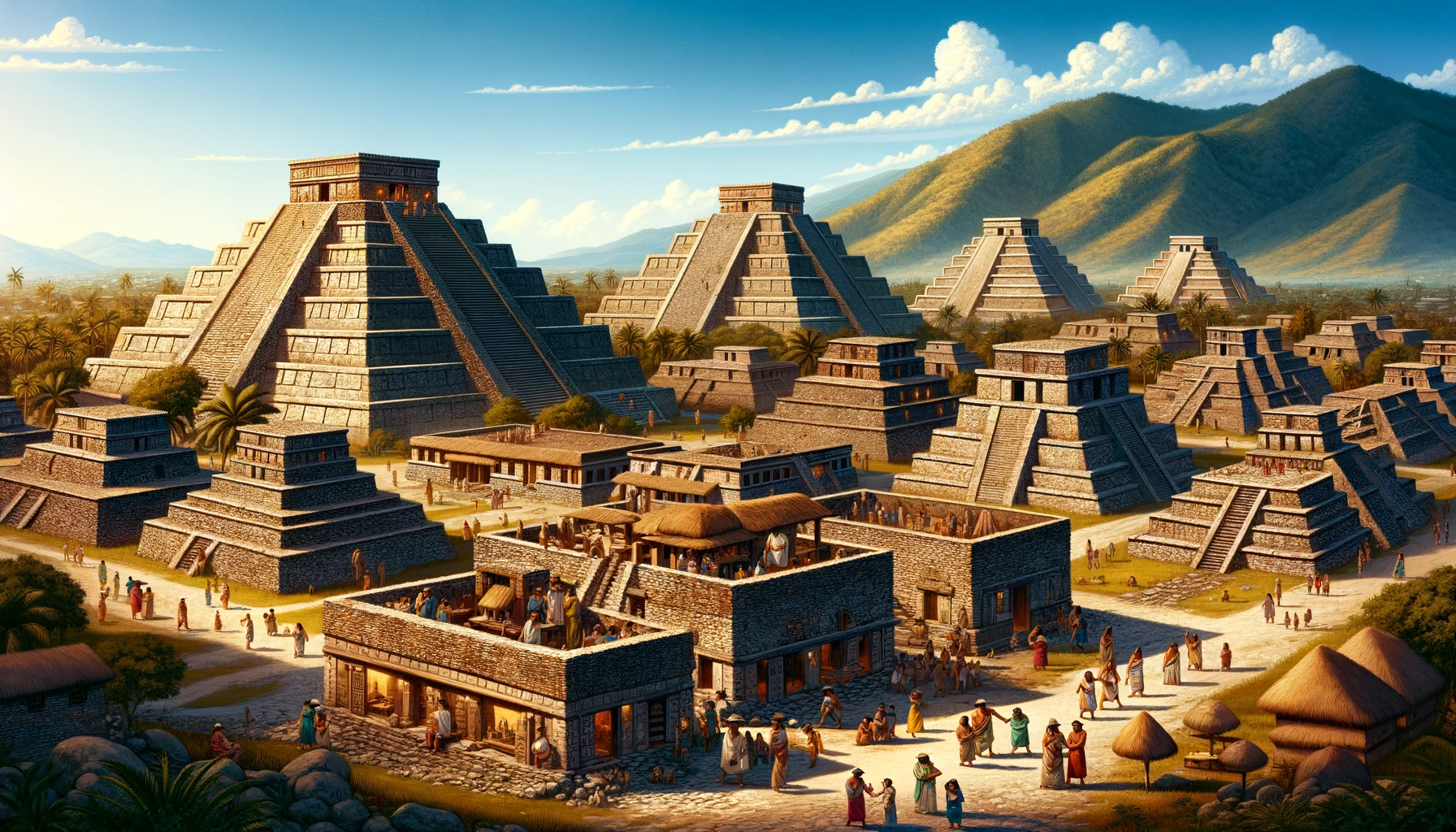
In the annals of Mesoamerican history, Culhuacan holds a revered place. Known as one of the oldest cities in the Valley of Mexico, its influence on the development of Aztec culture and religion is profound and lasting. Nestled on the southeastern edge of what is now Mexico City, Culhuacan's legacy provides a fascinating glimpse into the formative years of one of the world's most intriguing civilizations.
Origins and Early History
Culhuacan, whose name means "Place of Ancestors" in Nahuatl, was established by the pre-Toltec cultures, making it one of the earliest settled areas in the Valley of Mexico. Archaeological evidence suggests that the city was inhabited as early as the 6th century AD. It was a prominent center even before the rise of the Aztecs, known for its strategic location and fertile lands.
Political and Cultural Significance
As a significant altepetl (city-state), Culhuacan played a crucial role in the intricate tapestry of Mesoamerican politics. It was a vassal to the mighty Teotihuacan and later to the Toltecs, signifying its importance in the region's power dynamics. The city was known for its wise rulers and skilled warriors, and it was often at the center of regional conflicts and alliances.
Influence on Aztec Culture
Culhuacan's most enduring legacy is its profound impact on Aztec culture. The city is often credited with introducing key elements of religious and societal structures to the Aztecs. According to legend, it was a noble from Culhuacan who taught the Aztecs the art of agriculture, calendar systems, and religious practices. This tutelage was instrumental in shaping the Aztec Empire's identity.
Religious Significance
The city was a major religious center, with numerous temples and shrines dedicated to various Mesoamerican deities. It was particularly renowned for the worship of Ehecatl, the wind god, and Coatlicue, the mother of gods. The priests of Culhuacan were highly respected and played a pivotal role in the religious ceremonies and rituals that were later adopted by the Aztecs.
Architectural Heritage
Culhuacan's architectural contributions are notable. The city's layout was indicative of its religious and cultural priorities, with temples and palaces strategically positioned. The remnants of these structures provide valuable insights into the architectural styles and urban planning of early Mesoamerican civilizations.
Legacy and Modern-Day Relevance
Today, Culhuacan's legacy lives on as an integral part of Mexico's rich cultural heritage. The city's influence on Aztec culture, particularly in religious practices, societal structures, and art, is evident in the customs and traditions that have survived through the centuries. Modern archaeological efforts continue to uncover the secrets of this ancient city, offering a deeper understanding of its role in shaping the history of the region.
In conclusion, Culhuacan's significance in Mesoamerican history cannot be overstated. As one of the oldest cities in the Valley of Mexico, it was a beacon of culture, religion, and politics. Its influence on the Aztec civilization, particularly in shaping their religious practices and societal structures, has left an indelible mark on the cultural landscape of modern Mexico. As we continue to uncover its mysteries, Culhuacan remains a testament to the complexity and richness of ancient Mesoamerican societies.
Origins and Early History
Culhuacan, whose name means "Place of Ancestors" in Nahuatl, was established by the pre-Toltec cultures, making it one of the earliest settled areas in the Valley of Mexico. Archaeological evidence suggests that the city was inhabited as early as the 6th century AD. It was a prominent center even before the rise of the Aztecs, known for its strategic location and fertile lands.
Political and Cultural Significance
As a significant altepetl (city-state), Culhuacan played a crucial role in the intricate tapestry of Mesoamerican politics. It was a vassal to the mighty Teotihuacan and later to the Toltecs, signifying its importance in the region's power dynamics. The city was known for its wise rulers and skilled warriors, and it was often at the center of regional conflicts and alliances.
Influence on Aztec Culture
Culhuacan's most enduring legacy is its profound impact on Aztec culture. The city is often credited with introducing key elements of religious and societal structures to the Aztecs. According to legend, it was a noble from Culhuacan who taught the Aztecs the art of agriculture, calendar systems, and religious practices. This tutelage was instrumental in shaping the Aztec Empire's identity.
Religious Significance
The city was a major religious center, with numerous temples and shrines dedicated to various Mesoamerican deities. It was particularly renowned for the worship of Ehecatl, the wind god, and Coatlicue, the mother of gods. The priests of Culhuacan were highly respected and played a pivotal role in the religious ceremonies and rituals that were later adopted by the Aztecs.
Architectural Heritage
Culhuacan's architectural contributions are notable. The city's layout was indicative of its religious and cultural priorities, with temples and palaces strategically positioned. The remnants of these structures provide valuable insights into the architectural styles and urban planning of early Mesoamerican civilizations.
Legacy and Modern-Day Relevance
Today, Culhuacan's legacy lives on as an integral part of Mexico's rich cultural heritage. The city's influence on Aztec culture, particularly in religious practices, societal structures, and art, is evident in the customs and traditions that have survived through the centuries. Modern archaeological efforts continue to uncover the secrets of this ancient city, offering a deeper understanding of its role in shaping the history of the region.
In conclusion, Culhuacan's significance in Mesoamerican history cannot be overstated. As one of the oldest cities in the Valley of Mexico, it was a beacon of culture, religion, and politics. Its influence on the Aztec civilization, particularly in shaping their religious practices and societal structures, has left an indelible mark on the cultural landscape of modern Mexico. As we continue to uncover its mysteries, Culhuacan remains a testament to the complexity and richness of ancient Mesoamerican societies.